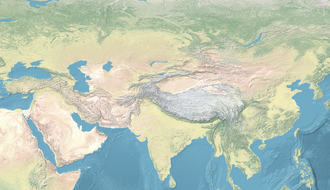| Geographical range | Siberia |
|---|---|
| Dates | 7th century BCE to 5th centuries CE |
| Preceded by | Barkhatovo culture, Itkul culture, Baitovo culture, Gorokhovo culture, Irmen culture |
| Followed by | Bakal culture |
Sargatka culture was a sedentary archaeological culture that existed between 7th century BC and 5th century AD in Western Siberia. Sargatka cultural horizon encompassed northern forest steppe zone between the Tobol and Irtysh rivers, which is currently located in Russia and Kazakhstan. [1] The northernmost Sargatka culture presence is found near Tobolsk, on the border of the forest zone. In the south, the area of culture coincides with the southern border of the forest-steppe. Eastern foothills of the Urals make up the western boundary of the culture, meanwhile Baraba forest-steppe forms the eastern edge for Sargatka settlements and burial grounds. The culture is named after the village of Sargatskoye on the Sargatka River, which is located near a Sargatka burial ground.
Contents
Archeological and genetic evidence suggest that Sargatka culture was a potential zone of intermixture between native Ugrian and/or Siberian populations and steppe peoples from the south, possibly of early Iranian or Indo-Iranian stock. [2]










